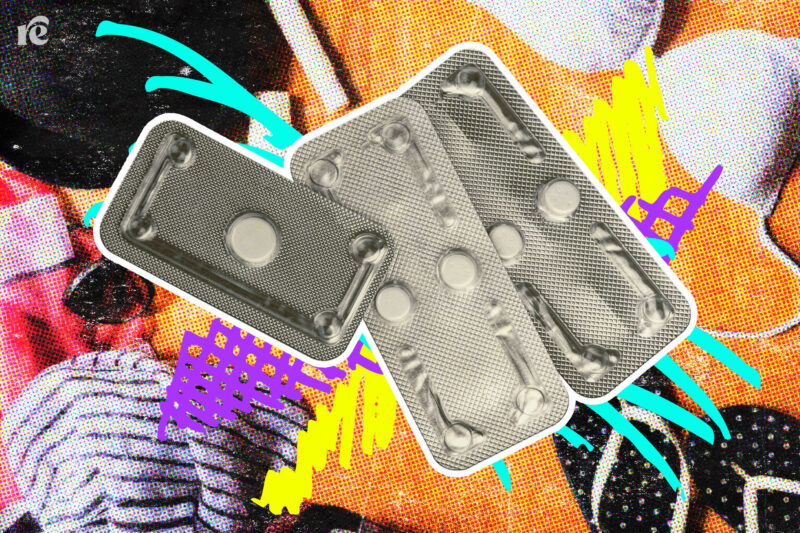What I Learned From My Four Abortions
My abortion journey underscores the importance of unfettered access to care—including self-managed abortion with pills.

My abortion journey began early in the COVID-19 pandemic in 2020 and was punctuated by four pregnancies that I decided to terminate.
As we wait for the Supreme Court to decide on the fate of mifepristone, I’m reflecting on how medication abortion access has been instrumental in expanding reproductive health-care options for countless people like myself. Mifepristone restrictions not only jeopardize our ability to have the types of abortions we want and need, but also perpetuate barriers to health-care access, particularly for marginalized communities.
I discovered my first pregnancy in March 2020 as a 19-year-old college sophomore in Ohio. I was determined to get an abortion, but bureaucratic hurdles like navigating a maze of waiting periods and clinic closures thwarted my attempts. But with the support of Abortion Fund of Ohio and an appointment I booked “just in case” at a local independent clinic, I got the abortion I wanted.
The following year, with the abortion rights landscape zeroed in on Texas SB 8, I found out I was pregnant in California, a seemingly more supportive environment for reproductive rights. Armed with the reassurance of a fellow abortion storyteller and doula, as well as my supportive partner, I thought getting an abortion would be smoother.
But at the clinic, I received an icy reception from the staff, their demeanor mirroring the sterile environment. Stripped of the comfort of familiar faces due to pandemic restrictions and social distancing measures, I felt loneliness, exacerbated by the impersonal nature of my surroundings.
As I underwent an ultrasound, the technician’s troubled expression hinted at unforeseen complications. My heart raced as the doctor delivered the news: The fetus was not visible, raising concerns of a potential ectopic pregnancy. I was told to come back in a week, and hopefully by then, the fetus would be visible. For the next week, I grappled with the uncertainty of my situation, acutely aware of the risks posed by a possible ectopic pregnancy. My experience underscored the vital importance of timely access to abortion care, regardless of the circumstances. Although subsequent examinations showed that I was not facing an ectopic pregnancy, the ordeal served as a reminder of the essential nature of abortion care, particularly in moments of uncertainty and vulnerability.
This experience encapsulates the complexity and urgency of reproductive justice and highlights the need for unfettered access to care. It reinforced my commitment to advocacy and storytelling, as I work toward dismantling barriers and amplifying the voices of those navigating similar challenges, while also shedding light on the profound impact of pandemic-induced isolation on the abortion experience.
My experience with self-managed abortion via pills was a deeply personal and empowering journey that allowed me to make the best decision for my body and my future on my own terms.
My third pregnancy discovery arrived as unexpectedly as the first in two. As news of the leaked Supreme Court draft opinion in Dobbs v. Jackson Women’s Health Organization made the rounds, it threatened to further curtail abortion rights and access across the nation, and I found myself grappling with a decision that grew increasingly fraught with each passing day.
Scheduling mishaps conspired to prolong the wait for my abortion and amplified my anxiety. In-clinic procedures were only available once a week, adding layers of logistical complexity to an already emotionally charged situation. At the clinic, I braced myself for the unfamiliar rituals of pre-procedure preparation since this was my first time getting an in-clinic abortion. Lying sedated, the procedure itself unfolded in a blur of sterile surroundings and clinical efficiency. After the procedure, I grappled with a profound sense of dissonance, as the bleak realities of reproductive injustice collided with the rhetoric of choice and autonomy.
However, it was my fourth and most recent abortion—self-managed with medication—that was a stark contrast to my previous experiences. Empowered by my work as an abortion advocate and doula, I embraced the autonomy of managing my own care at home. Supported by my partner and armed with information, I navigated the process confidently, free from the bureaucratic burdens that had marred previous experiences. My partner was by my side as I transformed my office space into a sanctuary of compassionate care.
As the evening progressed, the television illuminated the room, casting a soft glow that belied the gravity of the moment while I passed the pregnancy. The room was infused with the aroma of my favorite scent: nag champa incense. With the distant chatter of Love Is Blind serving as a distraction, I found solace in knowing that this time, I made the decision to safely self-manage my abortion—and the power was solely in my hands.
As I reflect on these journeys, the safety and effectiveness of self-managed abortion emerge as a beacon of hope amid the mounting legislative restrictions. My experience with self-managed abortion via pills was a deeply personal and empowering journey that allowed me to make the best decision for my body and my future on my own terms. Everyone should be able to have that kind of access if they choose.
